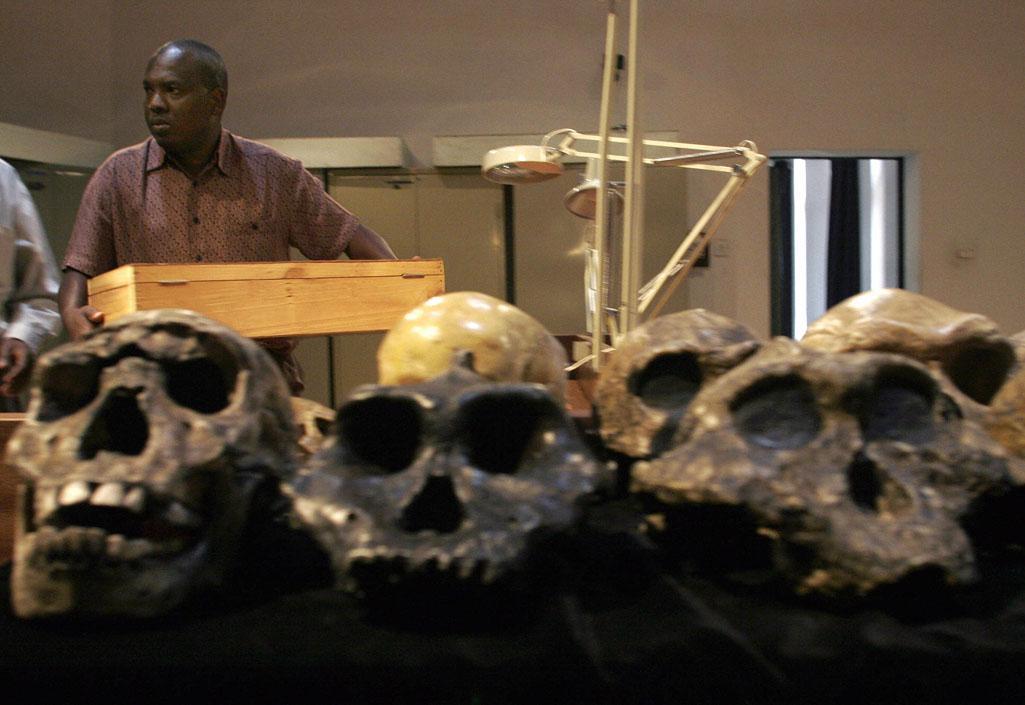Ancient stone tools shed new light on man’s origins
Scientists have discovered stone tools near Lake Turkana in Kenya that push back by hundreds of thousands of years the earliest example of tool manufacture by hominids and suggest that different types of early human co-existed and used similar technologies. The so-called ‘hand axes’ discovered at Lake Turkana were likely made by ‘Homo erectus’, some skulls of which are displayed in this picture at a museum in Nairobi.
Writing in the journal Nature a group of scientists have revealed their discovery of early human stone tools dating back as much as 1.76 million years, suggesting that different types of proto-human co-existed and used similar technologies much earlier than previously thought.
The discovery of the cache of oval-shaped, sharp-edged ‘hand axes’ on the shores of Kenya’s Lake Turkana predates other such tools by around 350,000 and re-affirms East Africa’s reputation as the cradle of mankind.
It is thought the hand axes were made by Homo erectus, a species of early human that co-existed with the more primitive Homo habilis, another species that made a cruder kind of stone tool.
The presence of both types of stone tool in archaeological sites in Europe and Asia suggest that both Homo erectus and Homo habilis began separate migrations across the world, a theory known as ‘Out of Africa’.
Homo erectus became extinct around 70,000 years ago, replaced by Neanderthals and modern humans.
Every day, reporters and producers at The World are hard at work bringing you human-centered news from across the globe. But we can’t do it without you. We need your support to ensure we can continue this work for another year.
Make a gift today, and you’ll help us unlock a matching gift of $67,000!
